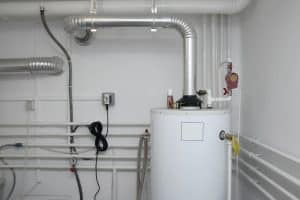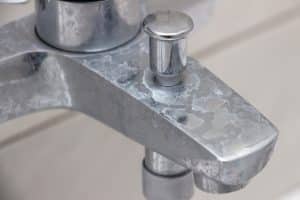Extended drought conditions across the Texas Hill Country present unique challenges for septic system owners in Boerne and Fair Oaks Ranch. Our region’s limestone bedrock, clay soils, and current water conservation measures create a perfect storm of conditions that can stress septic systems beyond their design limits. Understanding proper drought management protects your investment and prevents costly environmental cleanup requirements.
Understanding Drought Impact on Septic Systems
Soil Absorption Changes
Kendall County’s clay-rich soils undergo dramatic changes during extended drought periods. Clay soils shrink significantly as moisture content decreases, creating cracks and channels that can disrupt normal effluent absorption patterns. This soil movement affects drain field performance and can cause effluent to surface in unexpected areas.
The Edwards Plateau’s shallow soil profile over limestone bedrock compounds these challenges. When surface soils crack and shrink, effluent may reach bedrock faster than designed, potentially contaminating groundwater supplies that feed local wells and municipal water systems.
Bacterial Population Stress
Septic systems rely on beneficial bacteria to break down waste materials. Drought conditions stress these bacterial populations through temperature fluctuations, reduced moisture content, and chemical concentration changes that occur when water usage decreases dramatically.
Without adequate moisture and proper nutrient balance, bacterial activity slows significantly, reducing treatment efficiency and allowing partially treated waste to enter drain fields. This creates health hazards and can cause system backups into homes.
Water Conservation vs. System Health
Balancing Conservation Needs
While water conservation remains critical during drought conditions, septic systems require minimum water flows to function properly. Complete elimination of water usage can actually damage systems by allowing solids to accumulate and bacterial populations to crash.
Maintain baseline water usage of 50-70 gallons per person per day to keep septic systems functioning. This level supports bacterial health while still providing meaningful conservation during drought periods.
Strategic Water Usage
Distribute water usage throughout the day rather than concentrating usage into short periods. This approach provides consistent moisture to bacterial populations while preventing hydraulic overload that can occur when systems receive large volumes suddenly.
Consider timing shower and laundry activities to provide regular system feeding without exceeding absorption capacity of drought-stressed soils.
Soil and Drain Field Management
Protecting Absorption Areas
Keep vehicles, livestock, and heavy equipment off drain field areas during drought conditions. Compacted clay soils lose absorption capacity and may never fully recover even after drought conditions end.
Avoid irrigation or watering of drain field areas unless specifically recommended by septic professionals. Over-watering drought-stressed soils can cause rapid saturation that prevents proper effluent treatment.
Vegetation Management
Maintain appropriate vegetation over drain fields, but avoid deep-rooted plants that may interfere with distribution pipes. Grass cover helps prevent soil erosion and provides some moisture retention during drought periods.
Remove dead vegetation and debris that can block air circulation necessary for proper soil microbial activity. Good air circulation becomes critical when soil moisture levels drop significantly.
Chemical and Additive Considerations
Avoiding Harmful Products
Eliminate antibacterial soaps, bleach-based cleaners, and other products that can damage septic bacterial populations during drought stress periods. These chemicals become more concentrated in reduced water flows and can cause complete bacterial die-off.
Use septic-safe cleaning products and consider reducing overall chemical usage during drought periods. Natural cleaning alternatives protect bacterial populations while maintaining household sanitation.
Beneficial Additives
Consider professional bacterial additives designed for drought conditions, but avoid over-the-counter products that may contain harmful chemicals. Professional-grade additives introduce specific bacterial strains adapted to low-moisture conditions.
Consult with septic professionals before adding any products to stressed systems. Inappropriate additives can worsen problems and may void warranty coverage on system components.
Monitoring System Performance
Early Warning Signs
Watch for slow drain performance, unusual odors, or wet spots in drain field areas. These symptoms often appear before complete system failure and allow for corrective action.
Monitor water levels in septic tanks more frequently during drought conditions. Unusual water level changes can indicate problems with absorption fields or internal system damage.
Professional Inspections
Schedule professional septic inspections every 6 months during extended drought conditions. Drought stress can accelerate normal wear patterns and cause problems that require immediate attention.
Professional inspections should include bacterial population testing, soil absorption evaluation, and system component assessment to identify potential problems before they become emergencies.
Commercial and Multi-Unit Considerations
High-Volume Systems
Commercial properties and multi-unit developments face additional challenges during drought conditions. Higher waste concentrations and reduced dilution water can overwhelm bacterial treatment capacity rapidly.
Consider temporary waste reduction strategies such as low-flow fixtures, waterless urinals, or greywater recycling systems to maintain proper septic function during drought periods.
Regulatory Compliance
Business owners must maintain septic system compliance with environmental regulations even during drought conditions. System failures can result in significant fines and mandatory cleanup costs that far exceed preventive maintenance expenses.
Develop drought management plans that address both water conservation goals and septic system health requirements. Document maintenance activities and system performance to demonstrate regulatory compliance.
Emergency Response Planning
System Failure Protocols
Develop plans for septic system emergencies during drought conditions when replacement water sources may be limited. Identify alternative waste disposal options and emergency plumbing services familiar with drought-related septic problems.
Keep contact information for septic pumping services and environmental cleanup contractors readily available. System failures during drought conditions often require immediate response to prevent environmental contamination.
Temporary Solutions
Consider temporary waste reduction measures such as portable toilets for outdoor events or construction activities that might overload stressed septic systems.
Identify neighbors or community facilities with municipal sewer connections that might provide temporary relief during system maintenance or repairs.
Long-Term Resilience Planning
System Upgrades
Evaluate older septic systems for drought resilience improvements. Modern systems include features like effluent pumps, advanced treatment units, and soil amendment systems that perform better during challenging conditions.
Consider greywater recycling systems that reduce septic system loading while providing irrigation water for drought-stressed landscapes. These systems provide dual benefits during extended dry periods.
Soil Improvement Strategies
Work with septic professionals to evaluate soil amendment options that improve absorption capacity and drought resilience. Properly designed improvements can significantly extend system life and improve performance.
Consider backup drain field areas that can be activated if primary fields fail during extreme drought conditions. This redundancy provides essential backup capability for critical systems.
Professional Maintenance Services
Specialized Drought Care
Work with septic professionals experienced in Hill Country drought conditions. Local contractors understand the unique challenges facing systems in our limestone and clay soil environment.
Pulliam Plumbing provides comprehensive septic system services throughout Boerne and Fair Oaks Ranch, with experience managing systems through multiple drought cycles in our challenging geological environment.
Preventive Maintenance Programs
Establish regular maintenance schedules adapted to drought conditions. Increased pumping frequency, bacterial supplementation, and system monitoring help maintain performance during stress periods.
Document all maintenance activities and system performance data to identify trends and predict future service needs. This information proves valuable for system optimization and regulatory compliance.
Community Considerations
Protecting Local Water Supplies
Proper septic system maintenance during drought conditions protects local groundwater supplies that provide drinking water for private wells and municipal systems. System failures can contaminate local aquifers for decades.
Participate in community education programs about septic system care during drought conditions. Collective action protects environmental resources that benefit all Hill Country residents.
Understanding your septic system’s drought vulnerabilities empowers you to take protective action. Proper management during challenging conditions ensures continued system performance and protects valuable environmental resources throughout our Texas Hill Country community.




